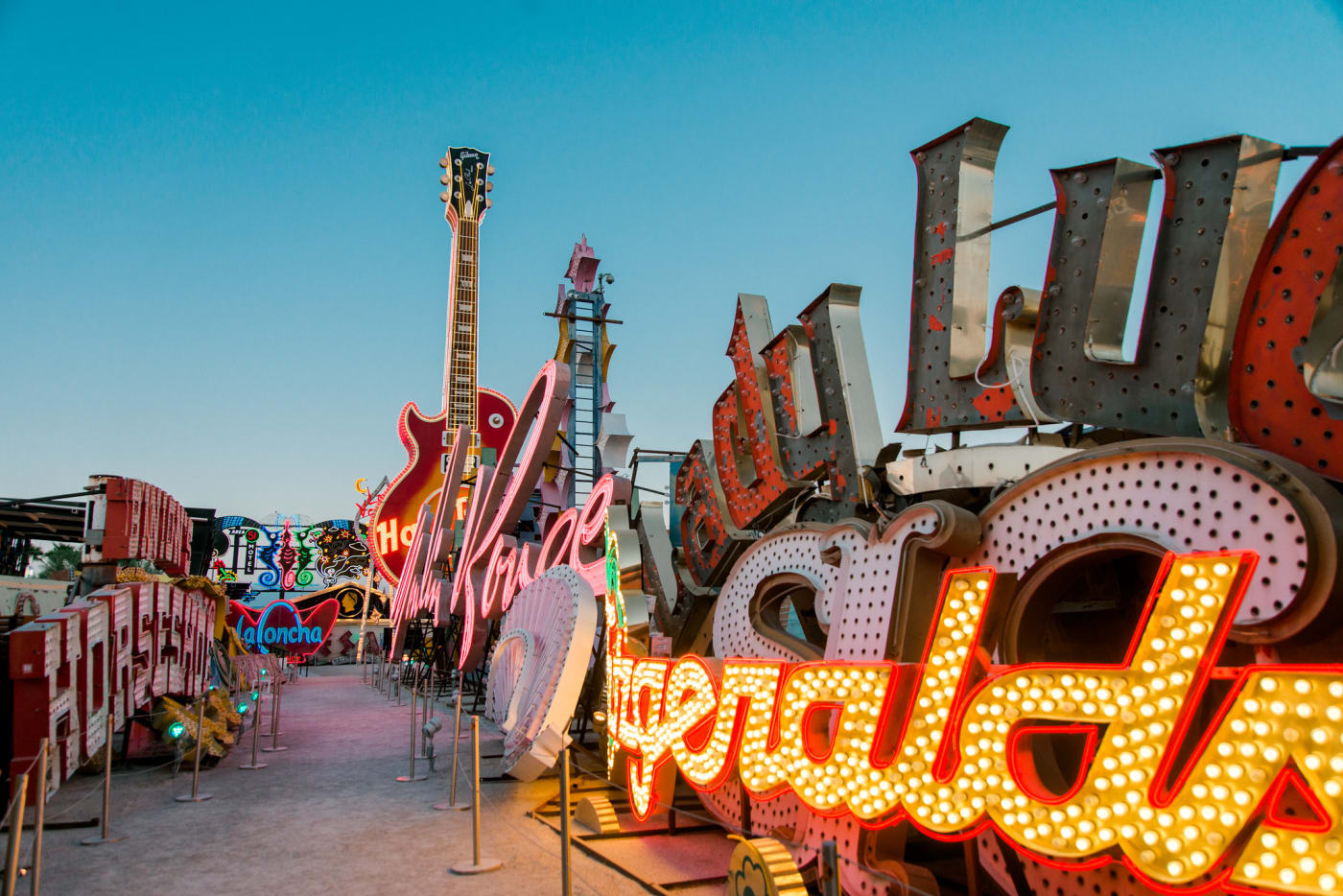Dunes Hotel & Casino


The Dunes Entrance sign onsite of the property. Credit Federal Heath Collection, The Neon Museum
Fabricated by Ad Art Signs c.1960s
Sheet metal, acrylic, candelabra lightbulbs, florescent tube
Purchased by The Neon Museum, 0050.001
The Dunes Hotel & Casino featured a myriad of history-making entertainment offerings, from performances by the Rat Pack to Las Vegas’ first-ever topless show, Minsky’s Follies. The property originally opened in 1955 and closed in 1993, imploded in a larger-than-life production planned by entrepreneur Steve Wynn to clear the way for his Bellagio Hotel & Casino project. Not only was this implosion nationally televised, but also it was accompanied by an elaborate fireworks show estimated to be worth over $1 million. When commenting on the demise of the Dunes, Wynn stated: “This is not an execution, this is a phoenix rising!”
The main pylon was demolished with the property making the “Dunes Entrance” sign one of the only remaining signs from the property after the demolition.
DUNES ENTRANCE RESTORATION FACTS
Is this gas in this restoration neon or argon, if any?
This piece does not have neon, but it has LED tubes that are similar to the original florescent tubes that would have backlit the Dunes Entrance portion.
What are the main construction materials used in this sign?
Sheet metal, acrylic, candelabra lightbulbs, LED tubes, electrical wiring and a 6-point flasher.
Was this sign moved offsite for restoration?
Yes, it was moved to Hartlauer Signs shop.
Were other signs moved for removal or installation?
Yes, multiple signs have been relocated within the Boneyard including two stars from the Stardust (yellow and pink) and 2 figures from Gameworks. The Fitzgeralds clover and Opera House ‘A’ were moved out of the Boneyard and into storage within the Boulevard Gallery. The Silver Slipper shield sign was shifted down about 10 feet south to where the Fitzgeralds clover sign was.
How long did it take from the moment the signage was removed from the Neon Boneyard to its return? Can you provide specific dates?
The sign was removed from the Neon Boneyard on April 7 of 2025, and restoration was complete in August. The piece will be installed at the Boneyard in September 19, 2025.
Where was this sign in the Neon Boneyard before its current location?
The metal structure was at the same location in the Boneyard. The acrylic piece was at Aaron Berger’s office.
What sign was on this location before this new sign and where is it now?
This restored sign is placed at the same location as before in the Neon Boneyard.
How many feet of glass tubing is present on the sign? How many light bulbs?
There are 3 lighting units within the backlit portion of the piece. There are about 100 incandescent candelabra lightbulbs.
Does the sign have any special mechanical features?
Yes, it has a 6- point flasher which allows the light bulbs to scintillate.
What type of paint was used? What are the names of the colors on the metal backing?
Automotive grade coating known in the sign industry as “Black Sign Paint” was used for the sign cabinet. The verso of the piece was not painted to show an example of the original paint. The lower elevation was replicated using a custom textured resin poured grid pattern.
Which are the main stages of this restoration?
Minimal metal work needed, warping of metal on channeling on proper right sid omplete painting work of metal structure. Construction of a new piece to replicat the original component on bottom part of sign box.
When installed at the Neon Boneyard, it required a newly fabricated angle iron frame to rise above Lido de Paris sign.
What is the approximate weight of the sign?
1,200 Ibs. including the display frame.
What are the approximate dimensions of the sign?
W 7.5’x D 1.5’x H 10′ The piece will be elevated 30 inches by its frame.
How many pieces was the sign divided into or was it moved in one entire piece?
Two different pieces, metal structure cabinet and acrylic ‘Dunes Entrance’ insert.
What is the name of the company that worked on the restoration of this sign?
Hartlauer Signs.
Fun facts about the sign restoration process.
- Ad Art original stickers were covered with special painter’s tape to protect them during the painting portion of this restoration.
- The two pieces were separated since the early 2000s before being reassembled for this restoration.
- Around 95% of the original sockets and wiring were in working condition when the restoration began.
- One of the sign electricians working on this restoration, Warren Donlon, used to do maintenance work on the Dunes 180-feet main pylon and other signages around the property in the late 1980s and 1990s.
